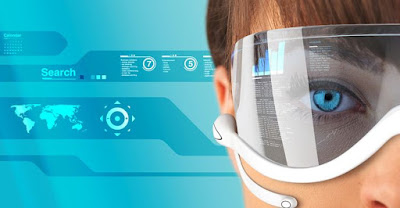Each of us is always excited to innovate, learn from their mistakes and make a new one. Here are the top 5 technological innovations of 2017. These technologies will affect the economy and our policy, improving medicine or influencing our culture are presented. Some are being developed now; Others will take a decade or more to develop. But you should know about all of them at the moment.
5 Best Technological Innovation 2017
Reverse Paralysis:
About 17,000 people in the US experience spinal cord injuries each year due to accidents. Depending on the severity of the injury, this can cause many problems, including muscle weakness in the arms, legs and abdomen, and paralysis. However, those painful days are coming to an end.
Scientists are making remarkable progress in using brain implants to restore the freedom of movement of the spinal cord lesions removed. They are linking wireless brain reading technology directly to electrical stimulators in the body, creating what Courtine called the “neural bypass” for the thoughts of people to move their limbs again.
Pay with your face:
In recent years, computers have become incredibly good at recognizing faces, and technology is rapidly expanding in the interest of surveillance and convenience. Facial recognition may be the answer to all of this.
And cash replacement cards, PayPal credit and other electronic payment platforms with facial recognition provide a safe and secure way for e-commerce sales. Face ++, a Chinese company invented this technology, detection systems now face authorize payments, provide access to facilities and track criminals. Once available in the United States, will force existing payment systems evolve, forever changing the way we shop online.
Quantum Computers Practices:
Google, Microsoft, Intel and others have recently made significant strides in the field of quantum computers. Developments indicate that computers with unimaginable energy are finally at your fingertips. The Delft project, led by Leo Kouwenhoven, aims to overcome one of the oldest obstacles to building quantum computers: the fact that qubits, the basic units of quantum information, are extremely susceptible to noise and therefore error.
But now Kouwenhoven and his colleagues believe that they are creating qubits could possibly be inherently protected. This stability would allow researchers to scale quantum computers by substantially reducing the computational power required for error correction.
Selfie 360 degrees;
We live in a 360 degree world, but we are accustomed to sharing it in a 1-D way. Until recently, there were two main options for recording 360-degree photos and videos: using a computer to place multiple cameras at different angles with overlapping fields or pay at least $ 10,000 for a special camera.
Today, as with most technologies, 360 cameras are becoming cheaper and better. Low-cost cameras that make spherical images are opening a new era in photography and changing the way people share stories. 360 video more and more accessible and widely available, we can expect that the content generated by the user undergoes a rebirth.
Gene Therapy 2.0:
Scientists have solved fundamental problems that prevent the cure of rare hereditary diseases. Researchers have been pursuing the dream of gene therapy for decades. The idea is to use a virus designed to provide healthy copies of a gene for patients with defective versions.
It is expected that the new generation of gene therapy, the CRISPR-cas9 genome editing tool, will initiate a new wave of faster and more accurate monogenetic diseases by treating DNA modification. With about 5,000 hereditary diseases caused by genetic errors known to date, CRISPR potential is abundant.
